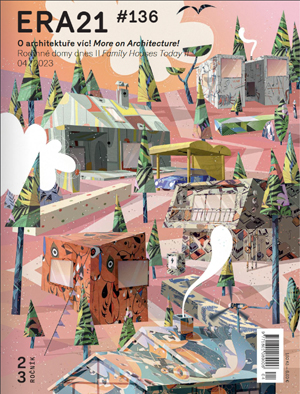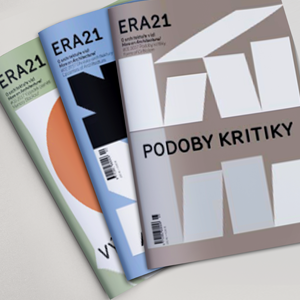You have to collaborate with others when working in the city centre, despite many still being opposed to the idea. Someone or something will make you. There’s no point resisting, though it does happen. There is a point in enquiring, analysing, listening, finding competent people and sustainable solutions. All that sounds quite sensible and simple. But the truth is very different. The revitalisation of Čelakovského sady in Prague was successful in that it changed many things, cleared new ways through the snow, and also followed some paths already made by others.
» entire articleWhat is unique about Danish architecture? What kind of history is it born from? What kind of future is waiting for it? Among current professionals in Denmark, there’s hardly anyone better to answer these questions than the Copenhagen-based philosopher Kristoffer Lindhardt Weiss. For years, he has been analysing and interpreting the architecture scene in Denmark for local and international audiences, while actually being an inextricable part of the scene himself.
» entire articleA key element in the design of Libor Erban and Jan Benda’s 1970s exhibition pavilion was its massing, with three simple box volumes stacked on top of each other like an inverted pyramid. Over time, this principle became suppressed and unclear. Recovering, redefining and redeveloping it was the main goal of the restoration project. One part of the pavilion reveals its load-bearing structure. New program arrangement is expressed in the combination of solid and translucent forms, with the right-hand side enclosed and the left-hand side more open and airy. The restored pavilion uses new and sophisticated building operation systems, which are not concealed but installed in a new technology tower.
» entire articleFollowing the example of its Viking ancestors, Danish architecture is taking the world by storm. Danish architects have always filled architectural news and magazine pages: names like Arne Jacobsen, Jørn Utzon or Henning Larsen are well-known to any architect. But what is it actually, Danish architecture, and why is it discussed everywhere all of the time?...
» entire articleThe new technology center finally embodies the idea of UMPRUM as a fully functioning part of the Prague city center. The building front emphasizes and opens up the main entrance to express the idea of openness and communication. By leaving out the full height of the neo-renaissance facade’s entrance segment, the building demonstrates its transformation from an elementary school to a university. There are two wings of five stories and two basement floors each, offering modern technical rooms and equipment for all study programs and various presentation needs, including technology for the building’s operation. The technical rooms are placed along the sides, lighter uses are concentrated in the center of the layout. All spaces are organized to let in sunlight and to facilitate visual links to the central semi-transparent rooms.
» entire article

ERA21 vydává ERA Média, s. r. o. |
|
|
Phone: +420 530 500 801 E-mail: redakce@era21.cz |
|
| WEBdesign Kangaroo group, a.s. |